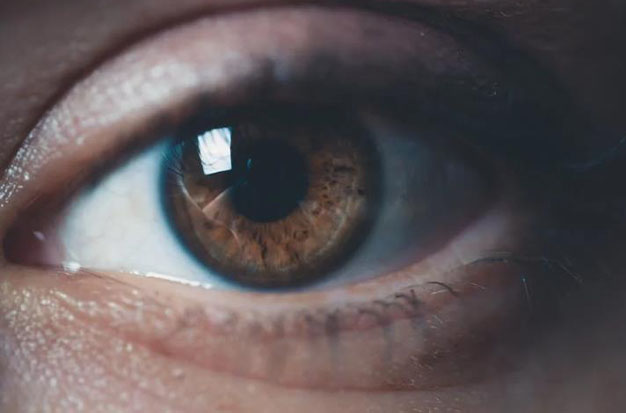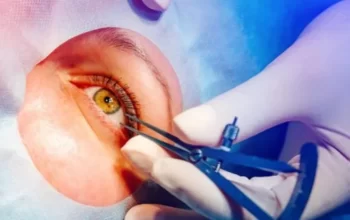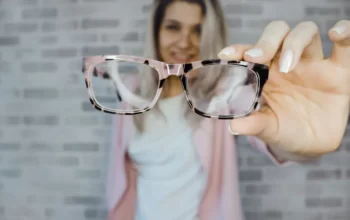
Both glaucoma and cataracts are eye conditions that can impair your vision and harm the health of your eye. They differ in their causes, treatments, and outcomes despite having some similar symptoms and risk factors in common.
Let’s examine these two eye diseases in greater detail, along with their risk factors, signs, and available treatments.
What Is Glaucoma?
Too much fluid pressure inside of your eye leads to glaucoma.
The aqueous humor, a liquid, fills your eyes. Your body replenishes that fluid every day. A drainage field made of meshwork and a small opening allows older fluid to exit your eye. To keep the pressure gradient inside the eyeball constant, fresh fluid replaces the old fluid.
The pressure inside your eye may increase if something obstructs either of the drainage systems. Optic nerve fibers may suffer permanent harm if the fluid pressure isn’t reduced, which could result in blindness.
Open-angle and closed-angle glaucoma are the two types.
Glaucoma cases are open-angle in the vast majority of instances. The loss of vision is gradual as the pressure slowly increases.
Closed-angle cases, where the blockage occurs suddenly, makeup about 10% of all cases, according to Trusted Source. Rapid and severe symptoms are present. Closed-angle glaucoma is a serious medical condition that needs to be treated right away.
Two Types Of Glaucoma
Open-angle glaucoma
- With this type of glaucoma, you will have minor symptoms or no symptoms at all. Most of the time, you won’t experience significant vision loss or go for frequent vision exams to check your eye pressure before you realize you have glaucoma.
- It develops slowly and will affect your peripheral or side vision first. But this will progress to central vision loss as more eye nerves are harmed and the intraocular pressure rises. This vision loss will eventually impact both eyes.
- Open-angle glaucoma usually develops due to issues with the drainage system of your eye, which becomes damaged as you get older. Another factor contributing to this condition is restricted blood flow to the eyes.
Acute angle-closure glaucoma
- This condition is uncommon and appears suddenly with a speedy increase in eye pressure. Eye pain, nausea from vision issues, eye redness, blurry vision, and the appearance of colored rings or halos around lights are some of the symptoms you may experience. Acute closed-angle glaucoma can cause temporary vision loss or even blindness if it is not identified and treated in a timely manner.
- Although this condition can be related to aging, it’s commonly caused by eye trauma that blocks the drainage system. It’s critical to seek medical attention right away if you experience symptoms of closed-angle glaucoma.
What Are Cataracts?
When the lens of your eye becomes clouded, it is said to have a cataract. For images to be projected on the retina, which is found at the back of your eye, light must enter through the lens. Additionally, it enables your eyes to shift their focus, enabling you to see near- and far-away objects.
Proteins make up your eye lenses, and as you age, these proteins degrade and congeal to form brown, whitish, or yellow clumps that blur, cloud, or block your vision. Cataracts are the medical term for these cloudy masses.
Vision loss due to cataracts happens over time. As if you were seeing through fog, your vision will become increasingly hazy and blurry. As your symptoms worsen, it gets harder to drive, especially at night, and colors and contrasts become less distinct. Additionally, you might develop a sensitivity to bright lights or the sun’s glare, and because of your poor vision, you’ll be more likely to trip, fall, or injure yourself. If cataracts are not treated, they will worsen, causing blurred vision that cannot be corrected by glasses or contact lenses.
Do Cataracts And Glaucoma Have Any Connections At All?
Glaucoma and cataracts are essentially two completely different eye diseases. The risk of each condition increases significantly with age, which is the most striking similarity. Angle-closure glaucoma risk may also be increased by extremely advanced cataracts, according to Dr. Starr.
Similar to this, cataract surgery may help lower eye pressure, according to Daniel Laroche, MD, president of Advanced Eyecare of New York, director of glaucoma services, and assistant professor of ophthalmology at Mount Sinai School of Medicine; this may lower the risk of developing glaucoma in the future. “When we remove the lens, it stops rubbing and allows the drainage to open. The lens can naturally enlarge with aging. Although it’s not always the case, there may be a connection here, Laroche tells Health. According to Dr. Laroche’s observations, some patients may avoid developing glaucoma by having cataract surgery sooner rather than later.
To reduce the number of procedures an individual must undergo, some ophthalmologists are beginning to schedule cataract and glaucoma surgeries concurrently. “The majority of ambulatory [outpatient] surgeries in the US are cataract operations. It’s frequently advised to perform minimally invasive glaucoma surgery (MIGS) as an add-on if we’re going to perform surgery, according to Dr. Starr. MIGS is a class of more recent glaucoma procedures with few aftereffects when compared to other glaucoma procedures. These procedures involve making extremely small incisions to place microscopic stents that improve eye drainage.
“The majority of the time after we open the drain [while we’re in there], patients don’t need to use eye drops,” Dr. Laroche notes that whether this approach is suitable for you will depend on the type of glaucoma you have and how severe it is. But it’s promising.

Is One More Serious Than The Other?
Both ailments are severe. The secret to preserving your vision and keeping the health of your eyes is early detection.
The majority of patients who undergo cataract surgery have successful outcomes most of the time. Cataracts typically do not result in permanent vision loss because your vision can frequently be recovered after surgery.
Reducing the fluid buildup in your eye is the main goal of glaucoma treatments. Optic nerve fibers that may have been harmed by glaucoma cannot yet be repaired, according to research. Glaucoma is likely to cause permanent vision loss if it affects even a small portion of your vision.
What Connections And Differences Exist Between Cataracts And Glaucoma?
Symptoms
The majority of common glaucoma types don’t cause symptoms until the optic nerve has sustained serious harm. The loss of peripheral (side) vision or the sensation that you are looking through a tunnel are frequently the first noticeable symptoms of this. Redness of the eye, blurred vision, light haloes, and excruciating eye and head pain can all be symptoms of other types of glaucoma, such as angle-closure and some secondary glaucomas.
When a cataract is first developing, it’s also typical for there to be no symptoms. When a cataract becomes more advanced, it can result in double vision, poor night vision, haloes around lights, glare from headlights, lamps, or the sun, cloudy or blurry vision, faded colors, and other visual impairments.
Risk Factors
Age greatly increases the prevalence of glaucoma. Additionally, it often has a genetic component; according to Dr., your chances of developing glaucoma are higher if you have a first-degree relative who has the disease. Starr. Your risk may also be increased by steroid use, high blood pressure, thin corneas, and eye injury or surgery. According to the Glaucoma Research Foundation, individuals of Hispanic and African descent also have a higher risk of developing the condition than those of European descent.
With age, there is a significant increase in the risk of cataract development. Other risk factors include having a family history of cataracts, drinking and smoking, having had eye surgery or an injury, spending a lot of time in the sun, having certain health conditions (like diabetes), and taking certain medications, most frequently steroids.
Diagnosis
Tonometry, a test used to measure eye pressure, is used to identify high eye pressure during a routine eye exam. To measure the pressure, your doctor will tap a device gently against the cornea after administering eye drops to numb the eye. In order to examine the optic nerve inside the eye and determine whether it appears normal, they will also use drops to dilate (widen) your pupils. If either of those appear abnormal, a number of additional in-office tests can be performed to examine other eye structures and determine whether glaucoma is likely.
If you visit the doctor because you are having vision issues or if you have cataracts, your doctor will examine the lenses in each eye as part of a routine eye exam. Your doctor will give you drops to make your pupils dilated so they can be examined closely to see if the lens appears normal or if there is any buildup or clouding. This test will be used to check the health of your optic nerve.
Progression
When vision loss begins, glaucoma usually advances very slowly at first before accelerating quickly. The optic nerve cannot be repaired because there are currently no available techniques for doing so. Glaucoma causes irreversible vision loss.
Cataracts develop very gradually. Despite the possibility of vision loss from cataracts, this is treatable. Most patients who undergo cataract surgery report an improvement in their vision.
Treatment
To avoid vision loss and maintain eyesight, early treatment is essential. Eye drops, which can lower eye pressure in a number of different ways, are typically the first line of treatment. There are a few minimally invasive procedures, such as laser surgery and a MIGS, that can be beneficial if eye drops are insufficient. When glaucoma is advanced, more invasive surgeries might be required.
Not immediately necessary treatment. Waiting to get treatment for a cataract until it is convenient for you is totally acceptable if the cataract is not bothering you too much. You can get cataract surgery if cataracts start to affect your daily activities. The clouded lens is removed during surgery, and a synthetic lens is put in its place. The National Eye Institute claims that cataract surgery is incredibly successful and safe. If you are a good candidate, your surgeon may decide to perform both the cataract and glaucoma procedures at the same time.
Conclusion
If glaucoma and cataracts are not identified and treated at an early stage, both conditions can result in vision loss. Both ailments can result in blurry vision in addition to other symptoms.
When fluid accumulates inside your eye, glaucoma develops. It puts pressure on the optic nerve when eye fluid cannot drain properly. Loss of vision may result in perpetuity. Your eye’s fluid pressure will be decreased during treatment.
A buildup of protein in your eye’s lens is what causes cataracts. Poor night vision, double vision, and cloudy vision may result from this. It becomes more likely for you to get cataracts as you get older. Fortunately, cataract surgery can usually help patients regain their vision.
Regular eye exams are essential to detecting glaucoma and cataracts early enough to preserve your vision and eye health, especially as you age.



